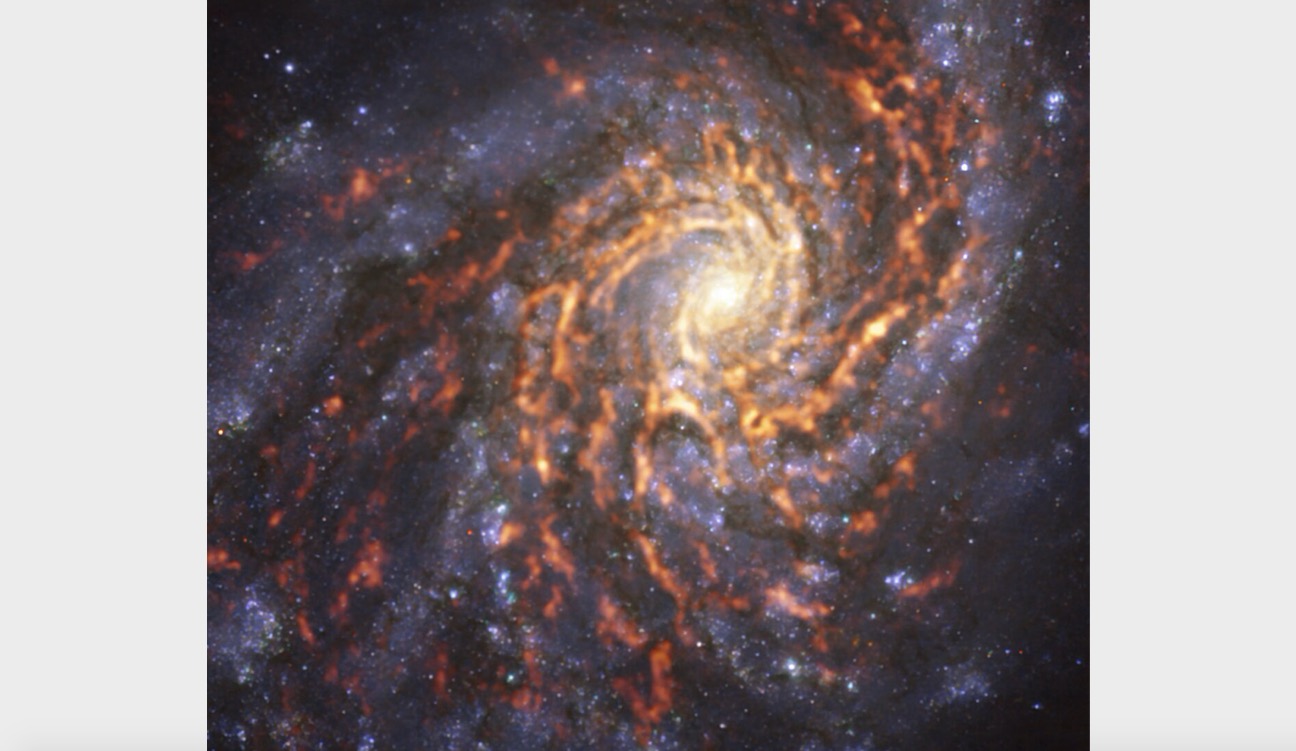Galactic arms comb 'Berenice's Hair' in gorgeous telescope photo
The spiral galaxy in the shot resembles our own Milky Way.

A spiral galaxy adorns "Berenice's Hair" in a striking telescope photo.
Although Charles Messier famously developed a catalog of celestial bodies in the 18th century that includes this galaxy, known formally as NGC 4254, NASA writes that another French astronomer by the name of Pierre Méchain was the one who discovered it, in 1781. But its more well-known observer is the one represented by the spiral galaxy's popular moniker, Messier 99.
This object is located 55 million light-years away from Earth. According to NASA, it can be seen using a moderately sized telescope in the month of May. But the spiral galaxy got a high-definition treatment with robust observational tools located in South America. Messier 99's well-defined arms resemble a pinwheel in a new image from the European Southern Observatory's (ESO) PHANGS survey.
Related: Take a stunning aerial tour of ESO's big telescopes in Chile (video)
Short for Physics at High Angular resolution in Nearby Galaxies, PHANGS "produces high-resolution images of nearby galaxies across all wavelengths of light," ESO officials write in an Oct. 24 image description. "This will allow astronomers to learn more about the diverse range of galactic environments found in our universe."
To observe Messier 99, astronomers directed two ESO facilities in Chile — the Very Large Telescope (VLT) and the Atacama Large Millimeter/submillimeter Array (ALMA) — to peer into "Berenice's Hair," a constellation formally known as Coma Berenices. It's located in the northern sky, near the constellation Leo.
The orange color of Messier 99's spiral arms in the photo, and the red at their edges, are ALMA data. These vibrant hues depict, according to ESO, "cold clouds of gas which can eventually collapse into stars."
Get the Space.com Newsletter
Breaking space news, the latest updates on rocket launches, skywatching events and more!
The purple and blue tones glittering in contrast are stars distributed throughout the galaxy. These cooler colors represent data from the VLT.
Messier 99 can offer astronomers more clues about how stars form in the universe. "Comparing these two datasets [ALMA and VLT] allows for a better understanding of how stars form," ESO officials write.
This object has also been the subject of other missions, like the venerable Hubble Space Telescope. "This galaxy is called a grand-design spiral," NASA officials wrote in 2017 when describing the Hubble observations, "with long, large and clearly defined spiral arms — giving it a structure somewhat similar to our home galaxy, the Milky Way."
Follow Doris Elin Urrutia on Twitter @salazar_elin. Follow us on Twitter @Spacedotcom or on Facebook.
Join our Space Forums to keep talking space on the latest missions, night sky and more! And if you have a news tip, correction or comment, let us know at: community@space.com.

Doris is a science journalist and Space.com contributor. She received a B.A. in Sociology and Communications at Fordham University in New York City. Her first work was published in collaboration with London Mining Network, where her love of science writing was born. Her passion for astronomy started as a kid when she helped her sister build a model solar system in the Bronx. She got her first shot at astronomy writing as a Space.com editorial intern and continues to write about all things cosmic for the website. Doris has also written about microscopic plant life for Scientific American’s website and about whale calls for their print magazine. She has also written about ancient humans for Inverse, with stories ranging from how to recreate Pompeii’s cuisine to how to map the Polynesian expansion through genomics. She currently shares her home with two rabbits. Follow her on twitter at @salazar_elin.









